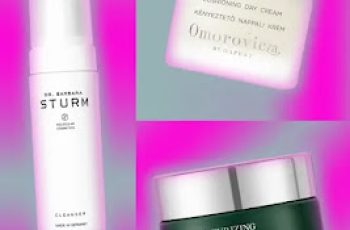
Kojic acid in skin care
Kojic acid in cosmeceutical skin care products
Kojic acid is a tyrosinase inhibitor used to lighten skin and treat hyperpigmentation.
The best kojic acid products are serums, toners, lotions, and creams.
Best kojic acid skin care products
Dermatologist-recommended skin lightening products with kojic acid are combined with other skin lightening ingredients.
The 5 best kojic acid products for the face are:
Biopelle Brightening KNR Serum
Derma Made Mela Fade
SkinCeuticals Discoloration Defense
La Roche-Posay Glycolic B5 10% Serum
PCA Skin Pigment Gel HQ Free
Benefits
What does kojic acid do to your face?
Kojic acid has many skin benefits.
Lightens dark spots
Treats hyperpigmentation
Improves melasma
Exfoliates
undefined
Best products
The strongest kojic acid products have more than 1%, they are more likely to cause side effects.
It is hydrophilic.
This means it is most effective in toners, essences, mists, gels and serums.
It is best when used in leave-on products.
This ingredient isn’t the best in soaps because it rinses off too quickly.
It can also be found in lotions and moisturizers.
Kojic acid oils are not very effective.
It has minimal efficacy in oils and heavy fatty acid rich creams because it is hydrophilic.
Kojic acid pads are effective.
Skin care routines
Kojic acid is poorly absorbed into the skin. The skin care routine order should be designed to increase skin penetration of kojic acid.
How to layer your regimen
Using the wrong cleanser and moisturizer can prevent kojic acid from getting into the skin. They way you layer products with kojic acid is important.
Here are some tips about layering kojic acid:
Combine kojic acid with hydroxyacids such as glycolic acid
Use hyaluronic acid serum in the same skin car eregimen
Use with retinoids and corticosteroids
Hydroxyacids loosen attachments between skin cells allowing increased absorption. These acids also help keep the skin pH lower which increases efficacy of kojic acid on the skin.
Lee et al. reported on derivatives of kojic acid displaying increased efficiency through increased penetration into the skin, however there are not any commercially available kojic acid derivatives that we could find on the market. (3)
In two separate studies, kojic acid combined with glycolic acid was shown to be more effective when compared with 10% glycolic acid and 4% HQ for the treatment of hyperpigmentation.(33,34)
A study by Lim compared the effect of a gel containing 10% glycolic acid and 2% HQ with and without 2% kojic acid.33 The result was that the addition of kojic acid to the gel further improved melasma.
Peels
Kojic acid is often used in in-office chemical peels to even skin tone.
It may also be found in masks and peel pads to use at home.
How to use kojic acid soap?
Kojic acid soap, cleansers and face wash are not very effective because the contact time with the skin is not long enough to cause skin lightening.
Kojic acid soap is safe, but not worth the price.
Even if you are using the kojic acid soap from CVS, it is still a waste of money.
We suggest using a glycolic acid cleanser instead and following it with a serum containing kojic acid.
But- if you want to be certain the products you buy are right for your skin type, take the quiz so we can guide you.
Take the Quiz
Skin lightening
Kojic acid in skin care is most often used for its skin lightening capabilities. Kojic acid is a tyrosinase inhibitor and an exfoliant.
It decreases tyrosinase activity by chelating copper.
How long does it take for kojic acid to lighten skin?
Tyrosinase inhibitors like kojic acid take 12-16 weeks to lighten dark spots on the skin.
If you are not improved in 3 months- you need to take a holiday from kojic acid for 2- 4 weeks and then restart.
Is kojic acid a clean ingredient?
Yes kojic acid is considered a clean ingredient and has no bad effects on marine life or the environment,
Is kojic acid a natural ingredient?
Kojic acid is produced by various species of Aspergillus, Acetobacter, and Penicillium.
Although kojic acid comes from a fungus, it is made in the lab and is not considered a natural ingredient.
Chemical structure of kojic acid
Kojic has a similar chemical structure to hydroquinone.
If you are allergic to hydroquinone- you may be allergic to kojic acid.
Kojic Acid Derivatives
Kojic Dipalmitate- better stability and less skin irritation
Kojic Monooleate- superior moisturizing properties
Kojic Acid Mannich Bases- enhanced antimicrobial and anti-tyrosinase abilities
Kojyl Thioether Derivatives- strong anti-inflammatory properties.
Kojic Acid Peptide- combines the skin brightening effects of kojic acid with the anti-aging benefits of peptides
Kojic Acid-Phenylalanine Amide with Metal Complex- enhances cell permeability and inhibits melanogenesis more effectively.
Kojic-βAla-Kojic- potent tyrosinase inhibition.
These derivatives enhance the properties of kojic acid, making them versatile and effective in various skincare formulations aimed at treating hyperpigmentation, providing anti-aging benefits.
If you are allergic to kojic acid, there is a possibility that you might also be allergic to its derivatives. Allergies are often related to the molecular structure of a compound, and derivatives, while modified, still share a significant portion of their chemical makeup with the parent compound (kojic acid).
undefined
Kojic acid for Melasma
Kojic acid can be used for melasma.
However, melasma is hard to get rid of permanently and using kojic acid alone sisnot enough.
You need an entire skin care routine dedicated to focusing on melasma to get the best results. Kojic acid is just one of many ingredients found in melasma skin care treatment products.
We can help you build a skin care routine for your Baumann Skin type.
Take the Quiz
Kojic acid for dark spots
Kojic acid is a treatment for dark spots that is very similar to hydroquinone.
It lightness dark spots by:
preventing the production of melanin
exfoliating away darkly pigmented skin cells
Kojic acid for acne
Kojic acid can help clear acne because it:
lowers skin pH
kills acne bacteria
exfoliates
lightens dark acne scars (these are not true scars but are hyperpigmentation which will go away.)
undefined
Can kojic acid lighten skin permanently?
No the effects of kojic acid are temporary.
A few days after stopping kojic acid, the tyrosinase enzyme becomes functional again.
This is why kojic acid needs to be used 1-2 times a day.
Is kojic acid the best ingredient for you?
It depends upon your Baumann Skin Type
Take the Quiz
How long does it take for kojic acid to lighten the skin?
A skin care routine customized for your skin type can take 8-16 weeks to clear hyperpigmentation.
You must think of every step in the routine for best results because some moisturizers can inactivate kojic acid.
If your dark spots don’t clear in 3 months read this.
Is kojic acid safe?
Unless you are allergic, kojic acid is safe.
Kojic acid safety
The EWG scores kojic acid as a 6-7 but it is unclear why it received this poor rating.
Kojic acid has been extensively used in foods, and there have been many reports on its oral safety. Kojic acid is used in food to prevent browning and to promote reddening of unripe strawberries.
It seem to be safe orally. Only one Japanese study showed toxicity resulting from an oral dose which was associated with the occurrence of hepatocellular tumors in p53-deficient mice.(27)
Kojic acid should not be injected. Convulsions may occur if kojic acid is injected.30
Kojic acid 4% is much more likely to cause side effects when used topically on skin.
Most kojic acid serums are 1%-2%.
Pregnancy
Kojic acid is safe to use during pregnancy. It has low systemic absorption and does not harm the fetus (Ref 40)
undefined
Kojic acid side effects
The side effects seen with kojic acid are:
allergy
contact dermatitis
stinging
irritation
rash
over-exfoliation when combined with other exfoliants.
undefined
Can kojic acid cause a skin allergy or irritate skin?
Yes. Kojic acid is a common skin allergen.
Topical kojic acid can cause allergies and irritation(26,31) especially in formulations using a 2.5% concentrations of kojic acid.
For this reason a concentration of 1% is usually used, but there have been reports of sensitization to 1% creams as well.34
You are more likely to be allergic to kojic acid when you have a hydroquinone allergy.
Does kojic acid cause cancer?
Kojic acid is very similar to hydroquinone. However, it has never been reported to cause cancer.
When to use kojic acid in my skin care routine?
Kojic acid should be used in step 3 of the morning and evening skin care routine.
However, this may vary depending on your Baumann Skin Type.
Kojic acid should be sued before a moisturizer and before retinol.
In some cases it may be included in a retinol or moisturizer.
Let us help you build a skin care routine and see if kojic acid is right or your skin type.
We will give you a step by step routine so you will know exactly when to use kojic acid.


